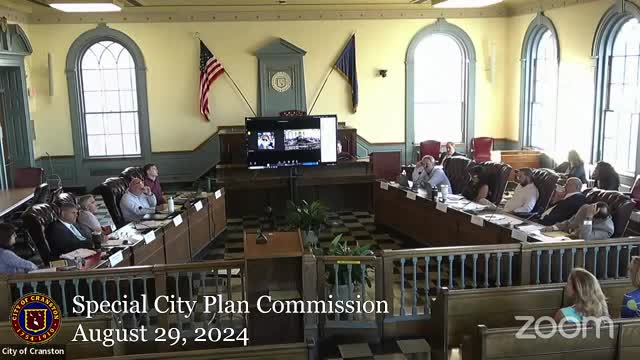Cranston community voices outrage over flawed planning process
August 30, 2024 | Cranston City, Providence County, Rhode Island
This article was created by AI summarizing key points discussed. AI makes mistakes, so for full details and context, please refer to the video of the full meeting. Please report any errors so we can fix them. Report an error »

During a recent government meeting, significant concerns were raised regarding the community engagement process and the proposed plans for a new pool in Cranston. A speaker criticized the portrayal of community values in the decision-making process, asserting that the narrative presented does not accurately reflect public sentiment.
The discussion highlighted a contentious debate surrounding the size and scope of the new pool, with some residents advocating for a facility comparable to the original, while others preferred a smaller, more cost-effective option. The speaker emphasized that there was overwhelming opposition to the pool's redesign, citing a petition signed by over 2,000 residents and more than 100 individuals who voiced their dissent at public meetings. They argued that the final design was largely rejected by the community, calling the official account a \"whitewashing\" of the issue.
Concerns were also raised about the effectiveness of community engagement efforts related to the comprehensive planning process. The speaker pointed out discrepancies in the documentation regarding public participation, claiming that the assertion of broad and inclusive engagement was misleading. They noted that only one public forum had been held, which did not adequately represent community input, and criticized the lack of meaningful opportunities for public feedback.
The speaker called for a more robust approach to civic participation, suggesting that the city should invest in extensive public education and outreach to ensure that the comprehensive plan genuinely reflects the aspirations and values of Cranston residents. They expressed concern that the current level of engagement would not suffice in the upcoming phases of the planning process, urging the city to prioritize meaningful citizen involvement before finalizing any plans.
Additionally, the speaker pointed out inaccuracies regarding the project's dedicated website, which was claimed to be a central hub for information and engagement tools but reportedly lacked the promised features. This further fueled their argument that the community's needs and desires were not being adequately addressed in the planning process.
The discussion highlighted a contentious debate surrounding the size and scope of the new pool, with some residents advocating for a facility comparable to the original, while others preferred a smaller, more cost-effective option. The speaker emphasized that there was overwhelming opposition to the pool's redesign, citing a petition signed by over 2,000 residents and more than 100 individuals who voiced their dissent at public meetings. They argued that the final design was largely rejected by the community, calling the official account a \"whitewashing\" of the issue.
Concerns were also raised about the effectiveness of community engagement efforts related to the comprehensive planning process. The speaker pointed out discrepancies in the documentation regarding public participation, claiming that the assertion of broad and inclusive engagement was misleading. They noted that only one public forum had been held, which did not adequately represent community input, and criticized the lack of meaningful opportunities for public feedback.
The speaker called for a more robust approach to civic participation, suggesting that the city should invest in extensive public education and outreach to ensure that the comprehensive plan genuinely reflects the aspirations and values of Cranston residents. They expressed concern that the current level of engagement would not suffice in the upcoming phases of the planning process, urging the city to prioritize meaningful citizen involvement before finalizing any plans.
Additionally, the speaker pointed out inaccuracies regarding the project's dedicated website, which was claimed to be a central hub for information and engagement tools but reportedly lacked the promised features. This further fueled their argument that the community's needs and desires were not being adequately addressed in the planning process.
View full meeting
This article is based on a recent meeting—watch the full video and explore the complete transcript for deeper insights into the discussion.
View full meeting